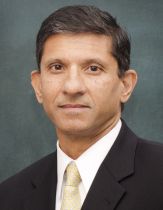
Suresh Mukherji
Diffusion-weighted imaging for distinguishing cholesteatoma from postoperative granulation is one of the most underutilized techniques for evaluating the temporal bone. Accurate detection of recurrent or residual cholesteatoma is difficult because the postoperative bony changes alter the classic CT findings necessary to confirm the diagnosis. Thus, many of the reports “waffle” in their attempt to discern the two entities.
Our paper and others have shown that DWI has clear value in detecting cholesteatoma following mastoidectomy. We now routinely perform DWI in all MRI of the internal auditory canal. The most common question I have received on this subject regards the type of diffusion technique we used and our preferred b-values. Prior studies have suggested that “line-scan” diffusion is the preferred technique, and this may be the case. However, many vendors do not offer this technique. We have found standard EPI diffusion performed on a 1.5T or 3T unit with b-values between 800–1000 sufficient to make the diagnosis. There may be some variation in the ability to detect cholesteatoma by altering the b-value. However, the more important issue is attempting to enhance overall field homogeneity because the temporal bone, especially following surgery, is fraught with susceptibility artifact. Thus, we feel that performing DWI of the internal auditory canal can be used successfully on a routine basis and that the focus should be on optimizing field homogeneity.
The largest impediment to greater utilization, we have noticed, appears to be a reluctance of otologists in North America to routinely order MR for evaluation of the postoperative temporal bone, compared with Europe, where MR seems to have greater acceptance. There does appear to be an opportunity for interdisciplinary collaboration to perform trials correlating CT and DWI MRI with surgical findings. Validation of ours and others’ initial results will help increase utilization of this promising technique.
Read this article at AJNR.org . . .